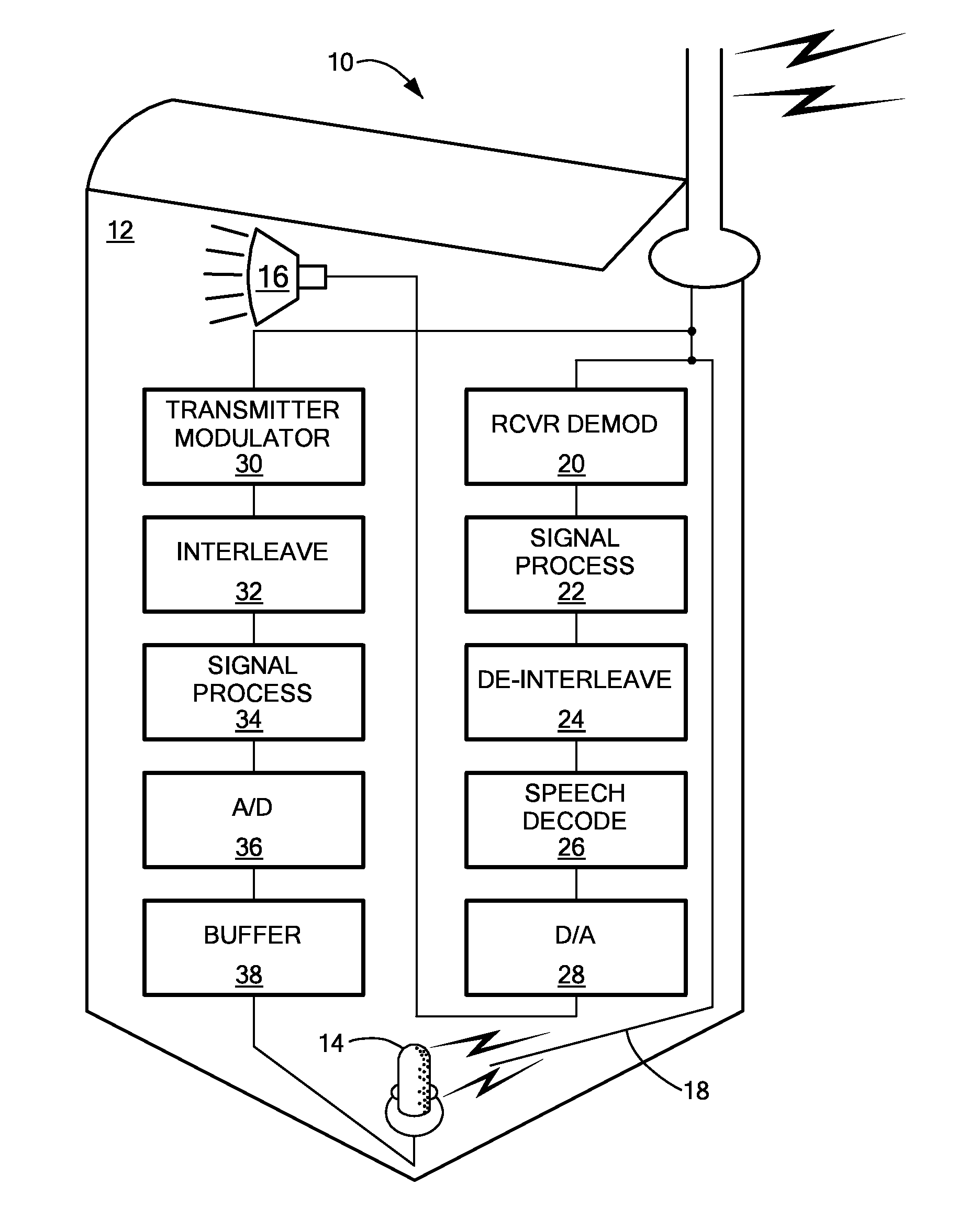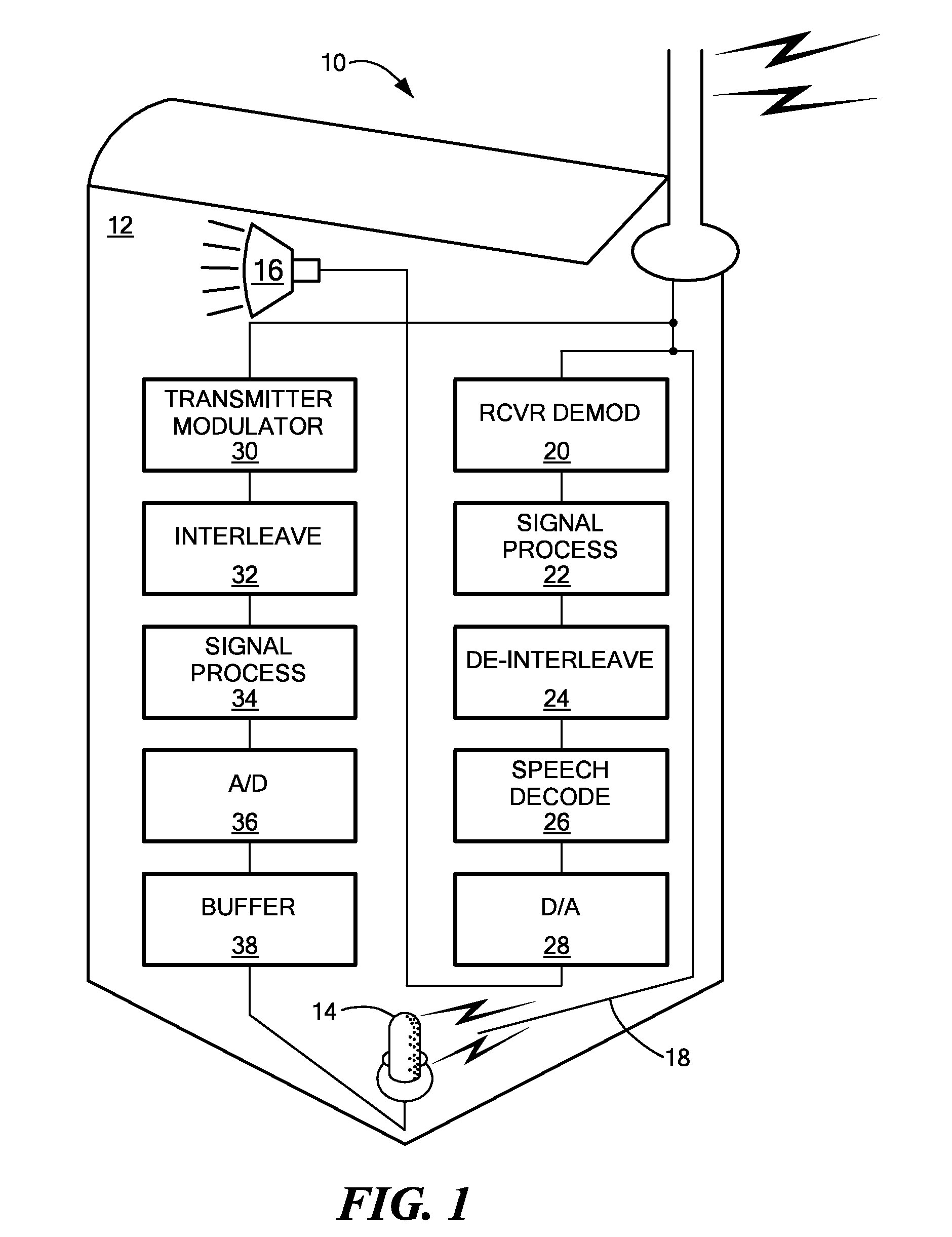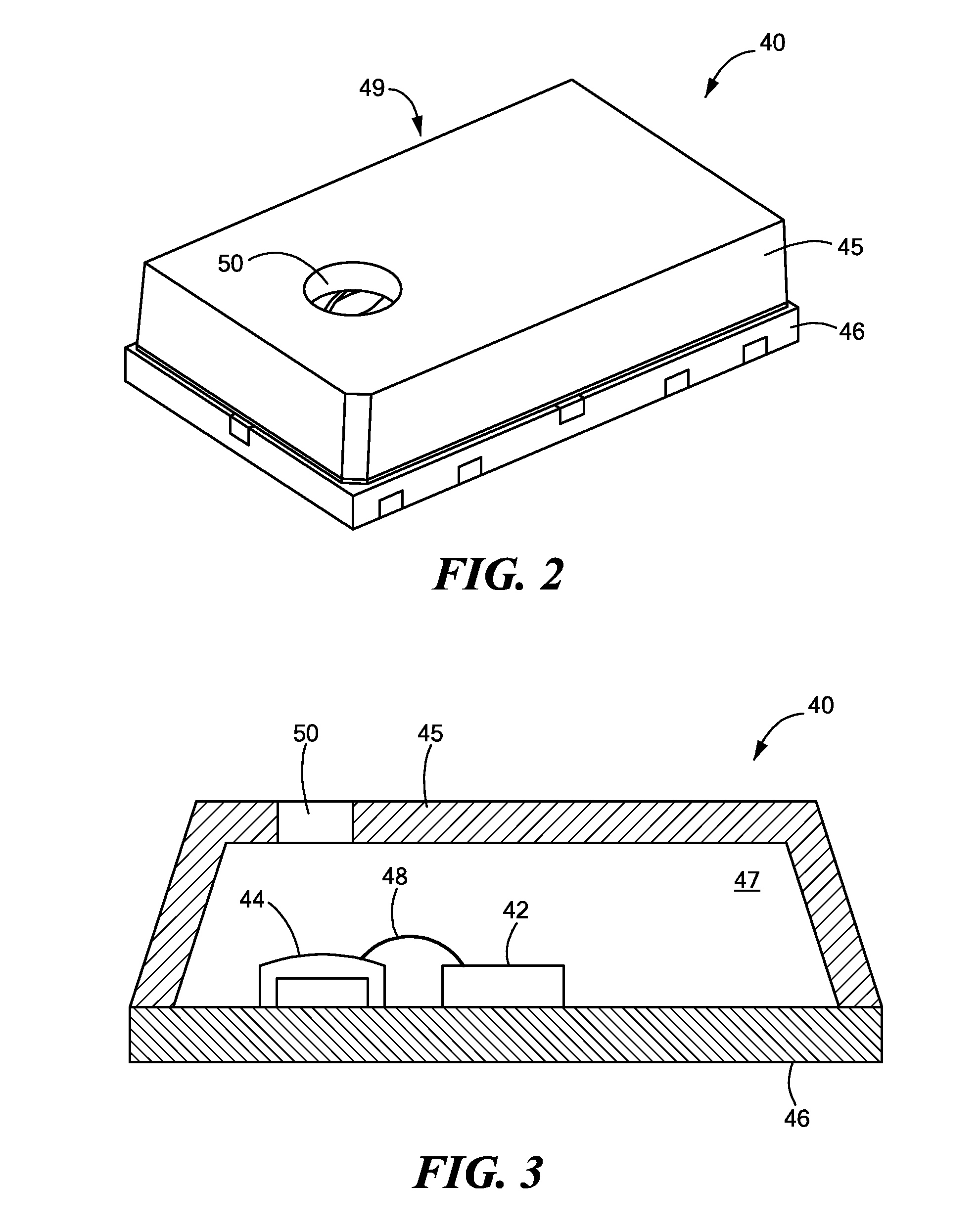Microphone Microchip Device with Differential Mode Noise Suppression
a microchip and microphone technology, applied in the field of microphone microchips with differential mode noise suppression, can solve the problems of noise interference, adversely affecting the operation of the cellular telephone, and the pickup of noise signals at audio frequencies is particularly troublesome, so as to improve the fidelity of the microphone signal output of the microchip
- Summary
- Abstract
- Description
- Claims
- Application Information
AI Technical Summary
Benefits of technology
Problems solved by technology
Method used
Image
Examples
Embodiment Construction
[0015]In accordance with embodiments of the invention, a microchip processes a microphone signal from a MEMS microphone in a voice communication device, such as a cellular telephone. The voice communication device employs a modulated RF carrier for signal transmission and reception. RF carrier signal noise and other non microphone related noise sources, and noise from bias voltages applied to the microphone can interfere with reception of the microphone signal at the microchip. Such interference can couple into the microchip via connections between the microphone and microchip. Interference is mitigated by employing a differential receiver to process the microphone signal. The microphone signal is received by the differential receiver as a single-ended signal. The other input of the differential receiver has another input that is arranged to have the same coupled noise and bias voltage related noise as the microphone signal input to the receiver. Thus, these two noise sources presen...
PUM
 Login to View More
Login to View More Abstract
Description
Claims
Application Information
 Login to View More
Login to View More - R&D
- Intellectual Property
- Life Sciences
- Materials
- Tech Scout
- Unparalleled Data Quality
- Higher Quality Content
- 60% Fewer Hallucinations
Browse by: Latest US Patents, China's latest patents, Technical Efficacy Thesaurus, Application Domain, Technology Topic, Popular Technical Reports.
© 2025 PatSnap. All rights reserved.Legal|Privacy policy|Modern Slavery Act Transparency Statement|Sitemap|About US| Contact US: help@patsnap.com



